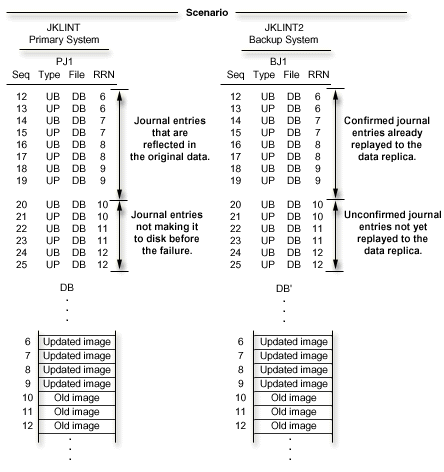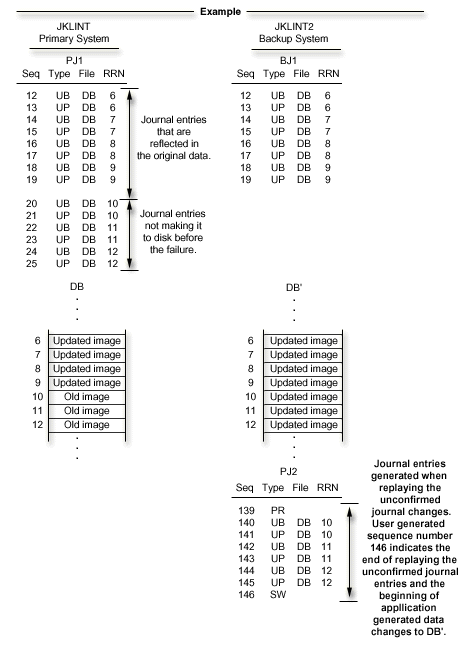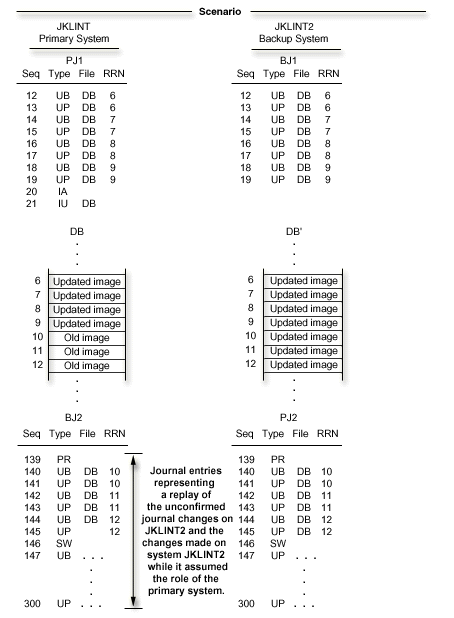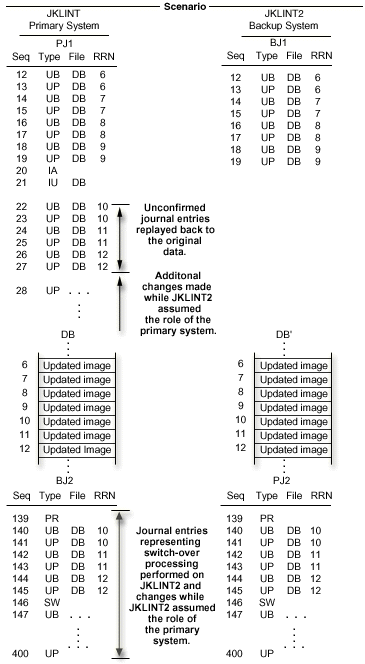Current state of JKLINT and JKLINT2
At the time of the system failure, the state of JKL and JKLINT is as follows:
- Journal entries 12-19 are already deposited into PJ1 and confirmed in BJ1.
- The corresponding data changes are also already reflected in the data replica, DB', on system JKLINT2.
- Journal entries 20-25 are built and validated in main storage on JKLINT and sent to BJ1, and then system JKLINT fails.
- Main storage is not preserved when JKLINT fails, so at the time of the failure, the last known confirmed sequence number in BJ1 is 19. Sequence numbers 20 through 25 are all unconfirmed.
 The last known sequence number in PJ1 will be 19 when system
JKLINT restarts.
The last known sequence number in PJ1 will be 19 when system
JKLINT restarts.
The hot-backup recovery strategy in these details does not require that both before-images and after-images are journaled to the local journal. However, the strategy would require before-images if, during the resynchronization process of the switch-back to the primary system, the strategy requires that the hot-backup application remove journaled changes. See step 3.c.




